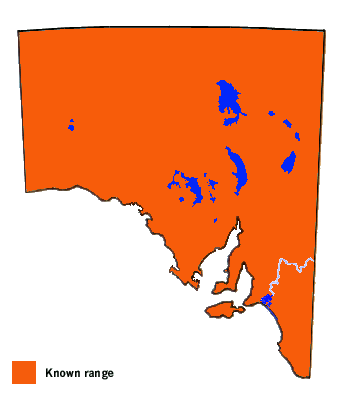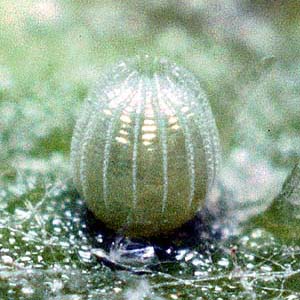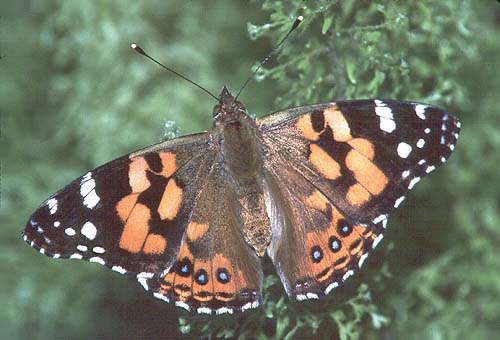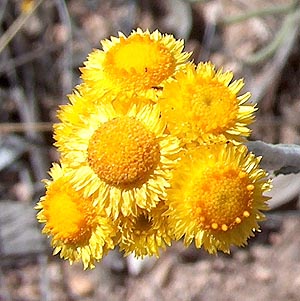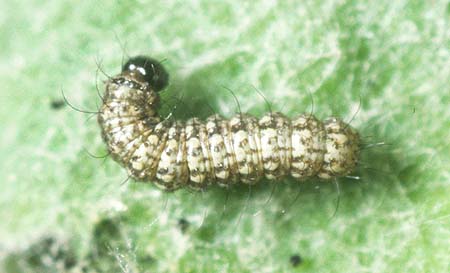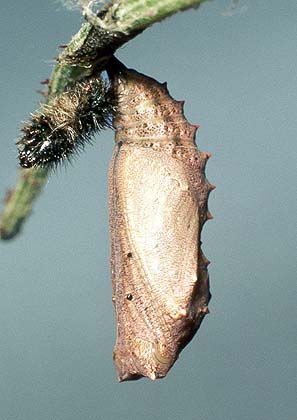Australian Painted Lady
Vanessa kershawi (McCoy)

Interesting Aspects
This butterfly is Australia's representative to the Painted Lady group of butterflies in other parts of the world, but most notably in the Americas. It is not known if this butterfly is the descendant result of an ancient migration of the Painted Lady of the northern hemisphere ( Vanessa cardui ) or is part of Australia's ancient Gondwanaland fauna. The Australian Painted Lady is a strong migrant and although mostly confined to Australia, has managed to disperse itself on upwelling, prevailing westerly winds to islands east of Australia, including New Zealand. It has even been reported on Macquarie Island some 1800 km south of Tasmania (halfway to Antarctica). Migrations are mainly in a southerly direction during spring, with a lesser northerly migration reported for autumn.
It is regarded by some lepidopterists as a subspecies of Vanessa cardui, from which it differs by being slightly smaller, and by normally having blue centres to the curved postmedian row of black spots on the hindwing uppersides. This latter feature, however, also occurs in some populations of V. cardui, and interestingly is also found in the similar Vanessa annabella of North America and V. carye of South America. (Conversely the blue spots are sometimes lacking in V. kershawi. ) The forewings of V. kershawi are also slightly less elongated compared to V. cardui, and the hindwing tornus is less angulate. In Australia, the latter butterfly is known to occur only to the south of Perth in Western Australia, where it leads a tenuous existence in competition with the Australian Painted Lady. V. cardui has been known from Perth since the Second World War, and is believed to have made it to Perth either as the result of a freak migration from Africa (Madagascar - Reunion) or Indonesia,or as an accidental transport by aircraft or ship. The fact that V. cardui has not extended its range in Australia (even though its larval hostplants are common), may suggest there is active interbreeding occurring between it and V. kershawi and that the resultant mating is either incompatible (infertile eggs), or it produces offspring that are either sterile or that there exists a regressive genetic interbreeding relationship between V. cardui and V. kershawi as regards wing pattern morphology.
The Vanessa group of butterflies have three generic sub-groups, comprising the Bassaris Subgroup that include the more primitive V. itea and V. gonerilla, the Vanessa Subgroup that include the Red Admirals (such as V. atalanta and V. indica), and the Cynthia Subgroup containing the Painted Ladies (such as V. kershawi and V. cardui).
The Australian Painted Lady has been reported to migrate in immense numbers in the eastern states, where one such migration lasted for eight weeks on a 600 km front, with the butterflies moving in a general southerly direction. Most of the big migrations have occurred in historical times. During one big migration in Victoria in 1889, numbers were so prolific as to 'darken' the sky, and shop windows in Melbourne trapped many specimens which had to swept out every morning. In the countryside, every footstep disturbed butterflies, and trains could not proceed because the butterflies resting on the rail tracks were so prolific as to prevent the locomotives from acquiring sufficient traction. This butterfly has also been reported flying around ships midway between Australia and New Zealand, and in 1860 multitudes of the butterfly were reported to inundate a ship off Cape Otway in Victoria. Sadly, such mass sightings are no longer reported.
Only one migration has been reported from South Australia, which surprisingly, was seen only very recently on 17 October, 2005. A large amount of rain had fallen in the interior areas of South Australia during late September and early October, and the migration was seen to occur immediately preceding a northerly monsoon storm-front as it descended upon Adelaide. During most of the day the butterflies (mostly in fresh condition) were seen migrating, helped by a warm north-westerly wind. Although difficult to see due to their dark colouration against a dark background, migrating butterfly numbers were estimated at three every 2 minutes over a 30 m line of sight, and similar records were made at both Marion and Torrens Park, some 7 km apart. (The flight was not checked on coastal beaches to see if the migration was coming in over the sea.) The flight was rapid and steady, below human head height, and continued on through open woodland, although dense vegetation thickets would eventually cause the butterflies to rise above the vegetation. Odd butterflies stopped to feed on flowers. Butterflies were often waylaid by resident Meadow Argus butterflies, causing a territorial flutter before the Painted Lady resumed its south-easterly flight. The odd Meadow Argus and Australian Admiral were also seen to be caught up in the migration. At the same time, Caper White butterflies were seen to be migrating in low numbers from the northeast.
Small numbers of the butterfly regularly appear in urban Adelaide during the period mid-August to mid September, which are probably the result of small migrations from the northern pastoral areas assisted by the hot northerly winds that start up during that time. Butterflies are also sometimes seen flying southwest over the 20 km expanse of seawater in the Backstairs Passage that separates the mainland Fleurieu Peninsula from Kangaroo Island. Butterflies in these migrations usually have large reserves of fat with the females being in a non-gravid state (eggs not developed). (In Africa, the related V. cardui often makes a mass emergence with the butterflies immediately grouping and flying off enmasse, without mating). Large numbers of the butterfly are produced in warmer northern pastoral areas after rain when their everlasting daisy hostplants grow prolifically to carpet the countryside.
Resident males often rest on bare ground with wings open, from where they will periodically undertake patrols of the vicinity searching for newly emerged females with which to mate. They will also gather on hilltops in the afternoons for the same purpose. They have a rapid flight, usually below head height, and both sexes spend a lot of time nectaring at flowers. When migrating, their flight is normally direct and swift, below head height.
Due to the sometimes short periods of rain and hostplant blooming in the arid inland areas, the larval stage duration of the butterfly is often very rapid and incomplete, producing butterflies of variable size. In such areas, they are capable of completing a brood within 6 weeks. The butterfly sometimes produces aberrations of consistent morphology.

